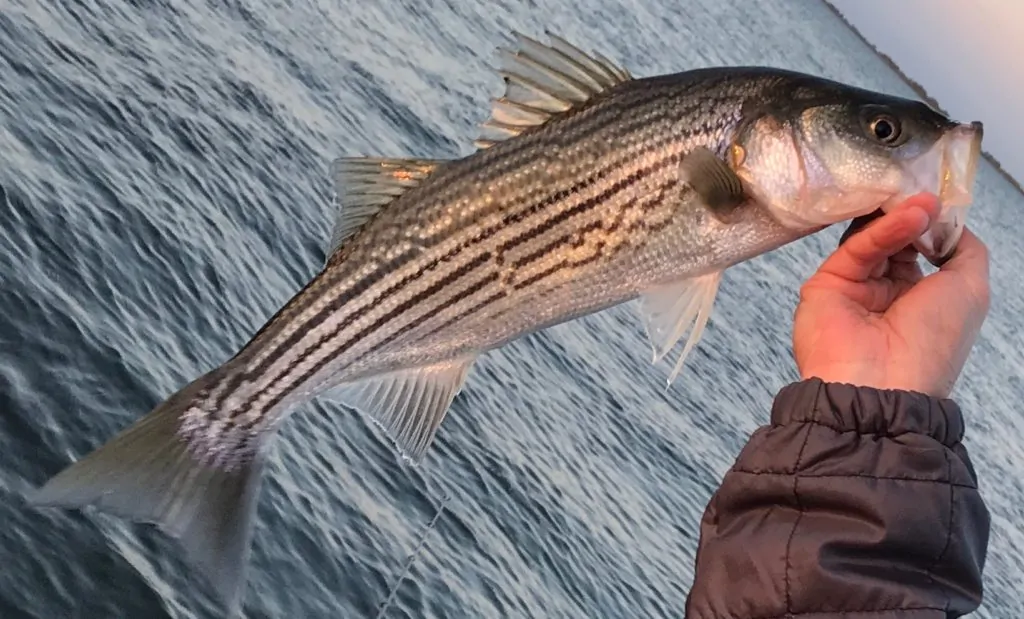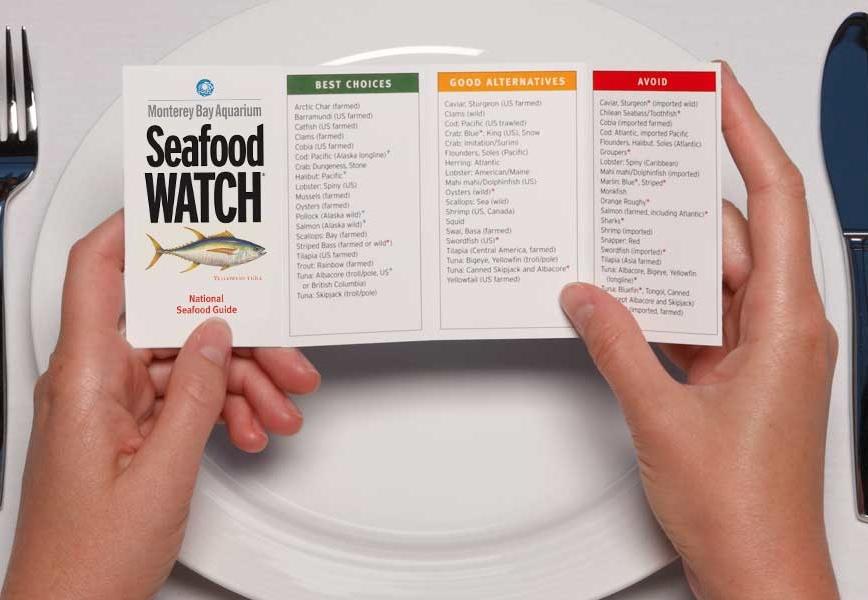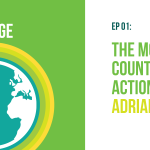Don’t Strip the Bay of Its Stripes
By Meg Graham, 2021-2022 Environmental Leader
When investigating a crime, detectives will often follow the money to find the culprit. Well, today we are depleting the world’s fisheries, stealing a natural wonder from the planet. Following the money back, we can see who pulls the strings behind this devastation.
One of these fisheries is the Chesapeake Bay, a natural wonder that should be protected because so much of the regional economy relies on it. Being one of the most economically significant regions in the United States, it provides people with tourism opportunities, recreational boating, and scenic beauty. Every year, the Chesapeake Bay produces “about 500 million pounds of seafood” (Chesapeake Bay) making the seafood industry another huge part of the economy. However, over the generations of use, the Bay has been taken for granted leading to habitat degradation. Issues like increased water pollution creates unlivable conditions for many aquatic organisms. The surrounding estuary habitat has also been damaged due to development on the Chesapeake’s shores. These existing threads are already making it hard for fish populations to keep large stocks, but sadly they still face an even bigger threat: overfishing.
Overfishing is one of the biggest threats facing the aquatic ecosystem today. Overfishing is when a species of fish is caught faster than it can replenish its stocks. This causes severe population decline and can even lead to extinction. Larger species of fish are usually most affected by this issue. This is because they are most commonly hunted for game and the seafood industry. Larger fish also tend to have a longer reproductive cycle, which means it is much harder for them to regenerate their stocks once they are depleted. It is common for these larger fish to be at the top of their food chain. Declines in these populations can cause trophic cascades across the entire ecosystem upsetting the balance and causing many adverse effects. Keeping fish populations stable is crucial to maintaining the ecosystem, which is why preventing overfishing is extremely important. By being more mindful of your consumption patterns, you can directly help the at-risk fish populations. To do this, focus on eating fish that currently have sustainable populations and stay away from species that are at risk of extinction.
Case study:
Let’s take a closer look into a native Chesapeake Bay fish affected by overfishing, the striped bass or rockfish. This fish is known for the bold horizontal stripes that run across its silver body. The rockfish can reach up to 5 feet in length making it a target for both recreational and commercial fishers. It travels along the east coast but reproduces in the upper Chesapeake Bay, making the Chesapeake Bay very important to maintaining the stocks of this fish. Good conditions allow the fish to be more successful at reproducing; therefore, growing the population. To maintain good conditions for reproduction, not only does the water quality have to be good, but also the fishing climate must be controlled. This is why regulating bay fishing is important.
 Atlantic Rockfish Source: Chesapeake Bay Magazine
Atlantic Rockfish Source: Chesapeake Bay Magazine
Today the fishing industry climate is not great for fish populations. Overfishing is a huge problem and it is depleting the striped bass stocks. Thanks to tracking done by the Maryland Department of Natural Resources, we can observe the changes in the Striped Bass spawning stock since 1985 (Figure 1). Since 1985, spawning stocks have been decreasing and in recent years have reached new lows. We can attribute this depletion to overfishing as in the “2018 Benchmark Stock Assessment, the fishing mortality rate of striped bass in 2017 was estimated at 0.31, which is above the threshold of 0.24” (Striped Bass | Chesapeake Bay Program).

Figure 1. Graph of Spawning Stock Survey Source: Maryland Department of Natural Resources
Today this iconic fish is at risk of extinction due to overfishing, but there is a chance to save it. By directing fishing pressure away from the rockfish, it can recover its stocks to reach a sustainable population size. But how do we redirect fishing pressure? Through consumer demand.
How can you help?
The seafood market is controlled by consumer demand because fishermen target species they know will be profitable. This often leads to high demand fish being overfished, destroying the populations. By redirecting consumer demand away from threatened species toward more sustainable populations, we can reduce overfishing of endangered species. To do this, you can make more conscientious decisions when eating seafood. Resources like seafood advisory lists can be used to find sustainable seafood recommendations. The Seafood Watch from the Monterey Bay Aquarium is one of the most popular seafood advisory lists. It categorizes fish species into three categories: best choices, good alternatives, and species to avoid. By sticking to fish in the “best choices” list, you help to relieve pressure off of the most threatened species. You have the power of the purse, and where you decide to spend your money matters.
 Seafood Watch Pamphlet Source: Smithsonian Ocean
Seafood Watch Pamphlet Source: Smithsonian Ocean
References:
Adult Spawning Stock Survey. Dnr.maryland.gov. (2021). Retrieved 14 December 2021, from https://dnr.maryland.gov/fisheries/pages/striped-bass/studies.aspx.
Bay, T., & Trouble, F. (2021). From the Editor: Rockfish Trouble | Chesapeake Bay Magazine. Chesapeake Bay Magazine. Retrieved 14 December 2021, from
https://chesapeakebaymagazine.com/from-the-editor-rockfish-trouble/.
Chesapeake Bay. NOAA. (2021). Retrieved 14 December 2021, from
https://www.fisheries.noaa.gov/topic/chesapeake-bay.
Choosing Sustainable Seafood. Smithsonian Ocean. (2021). Retrieved 14 December 2021, from https://ocean.si.edu/conservation/fishing/choosing-sustainable-seafood.
Fisheries. Cbf.org. (2021). Retrieved 14 December 2021, from
https://www.cbf.org/issues/fisheries/.
Habitat Degradation. Cbf.org. (2021). Retrieved 14 December 2021, from https://www.cbf.org/issues/habitat/.
Seafoodwatch.org. (2021). Retrieved 14 December 2021, from https://www.seafoodwatch.org/.
Striped Bass (Rockfish). Cbf.org. (2021). Retrieved 14 December 2021, from https://www.cbf.org/about-the-bay/more-than-just-the-bay/chesapeake-wildlife/rockfis h/.
Striped Bass | Chesapeake Bay Program. Chesapeakebay.net. (2021). Retrieved 14 December 2021, from https://www.chesapeakebay.net/issues/striped_bass.
About the Author:
 Meg Graham,2021-2022 Environmental Leader
Meg Graham,2021-2022 Environmental Leader
Meg is a Senior at Walt Whitman High School. They have been interested in science since a young age, specifically marine ecology. Meg believes involving the community is the first step in creating a greener earth and is excited to join Bethesda Green!





